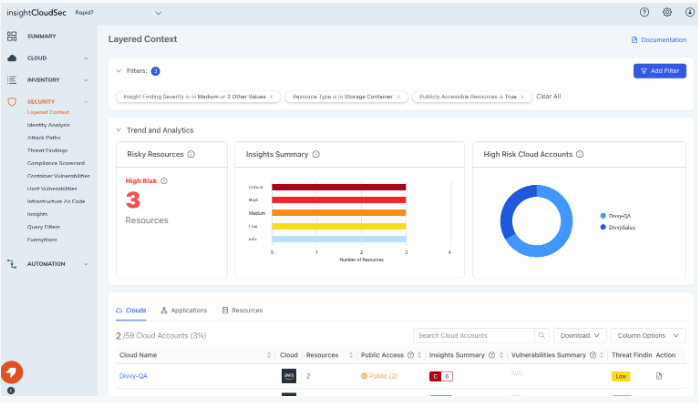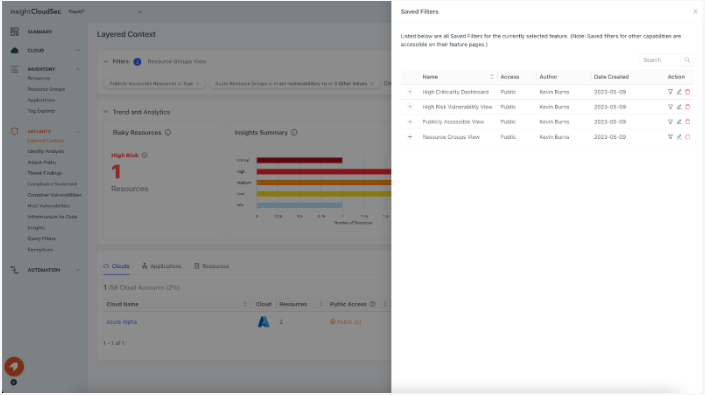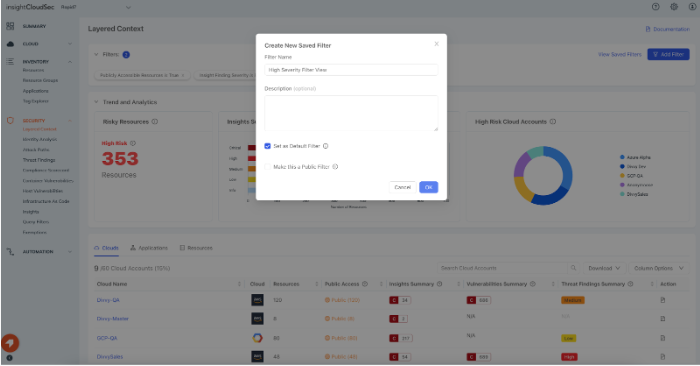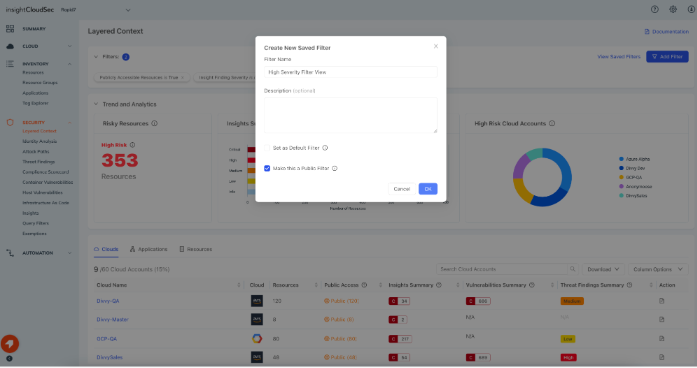Last updated at Wed, 26 Mar 2025 17:45:13 GMT
Last year, when we launched Layered Context in InsightCloudSec, we knew we had something great on our hands. Not just because we provided a single view for cloud security practitioners to see their full cloud risk posture (though, if we do say so ourselves, that’s pretty sweet). No, we knew we had something great because we had heard directly from our customers that what they really needed was the ability to view their risk signals in complete context, with insight into every layer of their stack.
Sure, there are solutions out there if you want to see your cloud vulnerabilities. For example, there are tools available that can help you manage identity and access permissions, and there are tools that can detect the presence of threats inside your network. What teams struggle with, however, is bringing all of this data together to see the big picture. When you’re looking at these various signals in disparate, siloed tools it can be easy to lose the forest for the trees, so to speak. Layered Context solves for this, bringing together insights from every angle of your cloud environment and enabling users to dynamically filter (or layer, if you will) those insights to help paint a complete picture and prioritize which issues to address first.
Introducing “Saved Filters” in InsightCloudSec
While initial feedback from customers has been overwhelmingly positive, there was one thing that we heard would help make this process easier, and more efficient. Customers wanted the ability to save those filter combinations that they want to reuse on a regular basis. This makes total sense. Who likes doing things over and over again?
To that end, I am pleased to share that we’ve rolled out the ability to do just that with the addition of “Saved Filters'', which was included in our recent release. With this release, customers are able to save an unlimited number of filter combinations for repeated use, meaning users won’t have to keep rebuilding their filters every time they want to revisit a specific view. Users will have the ability to save their filters in whichever part of the platform they’re using, but for the purpose of this post we'll focus on Layered Context.
First, we’ll want to set some filters that we want to layer together for a given view. For this example, we’ll drill down to find storage containers that have either high or medium level risk severity and are also publicly accessible.

Now, we have honed in one just a few resources that we need to take a look at as soon as possible. But what if I want to be able to check for this type of risky combination every day? Do I really want to build this filter every time? Probably not, no. With Saved Filters, I can easily access it whenever necessary.

But what if I always want to have a certain filter set up?
Now that we’ve covered how we can save filters, what if we want a specific filter set up at all times? For instance, what if all I care about is resources that are within a given cloud account, or only those from a specific service provider? Well, we’ve also rolled out the ability to set one of your saved filters as default, so whenever you log in, you’re only looking into signals coming from resources within your scope of coverage.

Okay, but what about the rest of my team?
Are you a system admin? Well, if so, there is a decent chance you’ll want the ability to set up and widely distribute important views for your teams to look into. To address this, we’ve also included the ability to set your filter combinations to ‘public’, allowing anyone on your team to see and use your saved filters. This helps foster collaboration across your team and drives increased efficiency with everyone on the team by sharing a consistent view and the ability to quickly build complex, layered views.

We’ll continue to build out Layered Context, and write up similar posts to share our progress as we go. For now, if you’re interested in learning more about how InsightCloudSec can help your teams manage risk across your complex cloud environments, be sure to check out our free demo!

